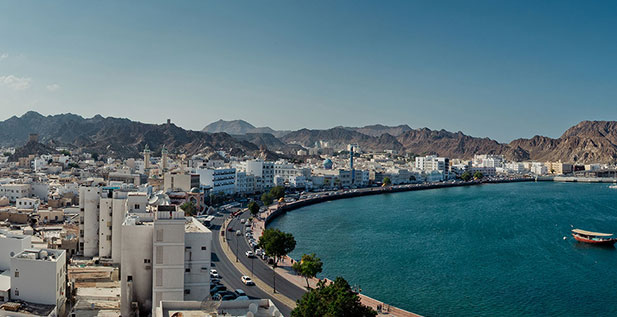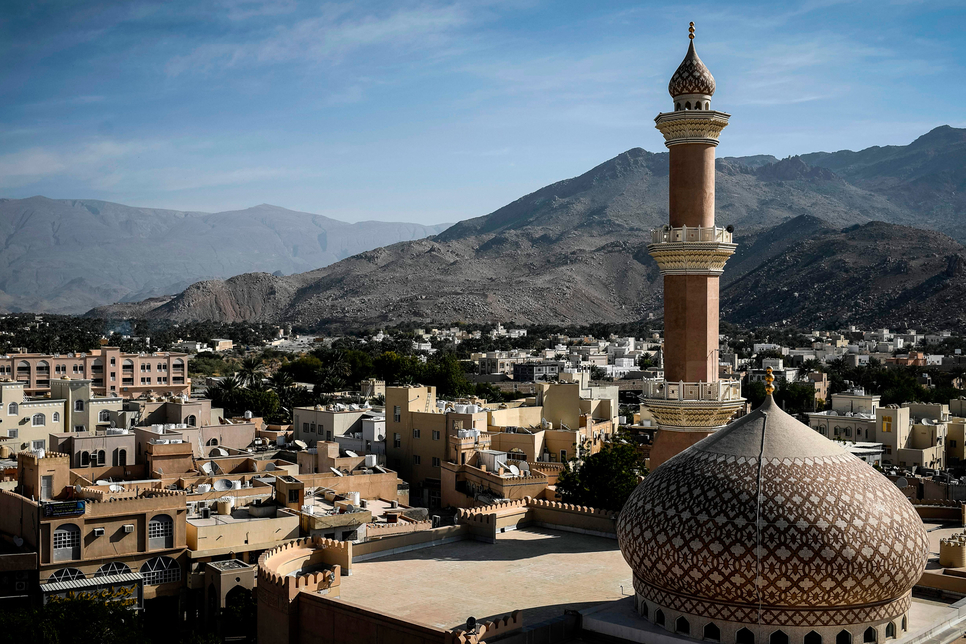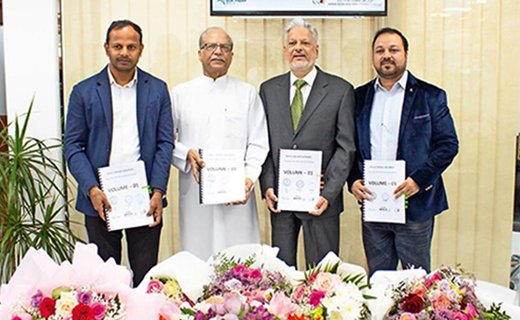
Oman construction leaders share industry outlook, advice for 2019
The private sector is stepping up to counter liquidity challenges as Oman pursues economic growth through non-oil projects
Oman is pursuing economic diversification through non-oil projects.
Oman’s construction sector is contending with economic challenges. Market consolidation, price wars, payment delays, poor liquidity, aggressive business practices, and rising levels of competition have all contributed to a significant pressure on margins. For many in the industry, 2019 is a year to batten down the hatches and wait for the storm to blow over.
Oman’s so-called liquidity crisis is the result of falling oil prices, which dented government spending and caused the pipeline of upcoming work to dry up somewhat in the past two years, as Lalbuksh Voltas Engineering Services & Trading’s (Lalvol) chief manager, Jaldeep Virani, tells Construction Week.
“What we see today is that the market has shrunk in Oman. There are not enough projects being launched, and there is an acute liquidity crisis. You feel the liquidity crisis with payments being delayed,” he says.
Consolidation is likely to result from this lack of liquidity, and Virani warns that smaller companies may be “pushed out of business”, due to macro-economic forces beyond their control.
It is safe to say that it is a challenging time for construction in Oman, and vice president of project intelligence at ProTenders, Dr Deva Palanisamy, says this is reflected in state spending.
“The government remains cautious in its outlook, due to the volatility in oil prices, which is the main revenue source,” she says. “Oman’s construction market is expected to be active in the coming years and, despite stringent expenditures, the government is prioritising the development of tourism, education, healthcare, transport, infrastructure, and energy projects.”
While government spending will provide some relief, the reported financial results of several construction companies listed on the Muscat Securities Market illustrate the damaging effects of the liquidity crunch.

Procurement and construction contractor, Al Hassan Engineering, narrowed its 2018 losses compared to the year before. It made a loss of $20.9m (OMR8.07m) compared to $128.7m (OMR49.5m) in 2017 and is liquidating its operations in the UAE. The Muscat-based builder faced lower than expected turnover due to the completion of projects, combined with fewer orders coming in, and a lack of project financing and bank guarantees.
In an update on its full-year financial performance, Al Hassan Engineering says it was adversely hit by “severe liquidity constraints” that impacted its ability to maintain construction momentum. While it has faced significant headwind in the past 12 months, the company did complete six projects during the year, including the Lekhwair Fahud pipeline, the Sohar Refinery Improvement Project, and Ghaba North Development.
Reducing company losses may help Al Hassan Engineering to return to profitability in 2019 – the first time it will be back in the black for seven years. However, the company says it is vital to maintain heathy levels of liquidity to continue progress on projects, and securing new work could be a challenge, with a limited national pipeline.
Al Hassan is not the only construction-related company to report a loss for last year. Raysut Cement Company’s profits were dented by the lack of liquidity during 2018, and group-wide pre-tax profits plunged 87% in 2018, falling from $20.8m (OMR8.03m) in 2017 to $2.7m (OMR1.04m) last year.
National Aluminium Products Company (Napco) fared better after swinging back to profitability in 2018. Net profits after tax rose to $2.1m (OMR814,000), following losses of $1.1m (OMR45,000) in 2017, thanks to higher sales volume and geographic expansion.
While the company grew in 2018, it still faces an uncertain future. The US-China trade spat has created huge challenges, one of which is aluminium price volatility.
However, tension between the world’s two largest economies has softened and talk of reconciliation is in the air, but Napco says the aluminium extrusion industry continues to face localised challenges. Some GCC players are becoming “extremely aggressive”, according to Napco, which plans to be “vigilant” about costs in order to drive up business efficiency and mitigate this risk.
While many Omani companies faced a tough time last year, Lalvol’s Virani says the industry may be at the end of the acute liquidity crisis. If the hardship of 2019 can be survived, next year looks promising. Private sector investment is trickling into the market, public-private partnerships (PPPs) are on the rise, and private capital may help alleviate frugal government expenditure.
Signs of this can already been seen. In March, a consortium led by Saudi Arabia’s Acwa Power won a deal to build and operate a $400m (OMR154m) energy plant in Ibri. All project costs will be met by the private sector and Virani calls this a “good sign”. He adds: “The government realises it needs PPPs and private investors, because how long can it keep funding growth in Oman?”
In addition to renewable energy projects, hospitality, healthcare, and construction projects in Duqm may provide potential growth. “There is a lot of investment going into Duqm and what we feel right now is that companies working in Duqm are getting their payments on time. They realise that Duqm is critical to the country’s economic sustainability,” Virani adds.

One of the big hospitality projects under way in Oman is The Mount, a mixed-use luxury destination. UK-headquartered construction consultancy Cundall is working on the scheme. The masterplan stage is already finished, and building activity is due to last up to four years, according to Cundall’s managing director for the Middle East, Richard Stratton.
The Mount sits on an 80ha plot of land with up to 45ha of residences, hotels, and retail units. “It is a totally untouched site, so sustainability is a huge issue, because we do not have sufficient utilities. We do not have sufficient infrastructure, so we are looking at absolutely everything to do with that,” he adds.
Cundall’s regional base of operations is in the UAE and the company has yet to officially set up in the sultanate due to the lack of available work. “We have a formal association in Oman with a company there,” Stratton says.
“Oman is a bit of a slow burner as a market, so there has never been enough volume of work to make the step to formally set up. We have a formal partnership with an Omani-owned company and that partnership works very well for us.
“We respect the Omanisation arrangements and strive to set up a model of working with our Omani partner where the majority of fees stay in Oman.”
T2o Engineers, which has an office in Oman, also says that business has been good despite industry-wide liquidity problems. The company picked up Sustainability Initiative of the Year honours at the Construction Week Oman Awards 2018, and the consultancy’s managing partner, Stephen Vickers, says the business has grown in the months since: “T2o Engineers enjoyed the last 12 months and what 2018 brought.
“We have consolidated our processes and practices, become sharper in our design delivery, and also broken through the 50 employee mark.”
It is clear that growth is still possible in the sultanate. The country is focused on developing its aviation sector to move the economy away from oil and grow the tourism industry. Palanisamy from ProTenders says “the scale of the projects to build and open the new airports seems unprecedented in Oman”, and this will provide significant opportunities for contractors.
In additon, with the rise of renewable energy, healthcare, and infrastructure projects, it is likely that there is enough upcoming work in the pipeline to ensure most Omani companies can weather the storm of 2019 and remain hopeful about what lies ahead.


